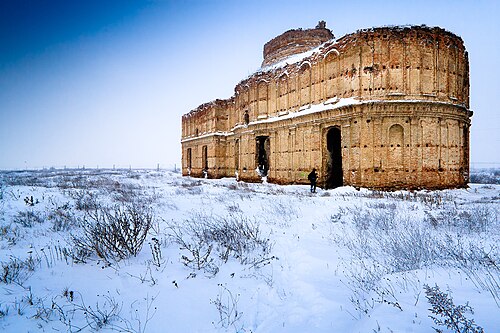Wikimedia Blog/Drafts/Wiki Loves Monuments 2015/my
This post was published on the Wikimedia blog on September 1, 2015. |
Title ideas
- In September, we love monuments
Summary
A brief, one-paragraph summary of the post's content, about 20-80 words. On the blog, this will be shown in the chronological list of posts or in the featured post carousel on top, next to a "Read more" link.
- Today marks the start of the sixth edition of Wiki Loves Monuments, the largest photography competition in the world. Thousands of Wikipedia readers and contributors from more than 30 countries around the globe will be taking part in the contest, hoping to document their local heritage, contribute to Wikipedia, and perhaps win a little prize. Here's a preview of the competition with a special focus on a long-term participant, Italy.
Body


The month of September is well known as the beginning of spring or fall, depending on the hemisphere. In Europe, it is also known as the month of the European Heritage Days, a joint action by 50 states who celebrate the common European cultural heritage. In the Wikimedia movement, September holds a special place as the period during which the annual Wiki Loves Monuments contest is traditionally held.
Certified by the Guinness Book of World Records as the largest photography competition in history, Wiki Loves Monuments aims to involve the general public with contributing to Wikipedia, raise awareness of the cultural heritage around them, and document it in photographs that would be free to use for anyone, for any purpose.
Organized for the first time in 2010 in the Netherlands and led by Wikimedia chapters, groups and volunteers, the contest has grown over the years to involve almost 70 countries from all over the world, including Norway and Ireland in Europe, Tunisia and Kenya in Africa, Canada and Argentina in the Americas, and Nepal and Thailand in Asia, among many others. In just 5 years, thousands of amateur and professional photographers alike uploaded over 1.2 million pictures of culturally significant buildings and structures, many of which are used to illustrate articles on Wikipedia and are viewed by millions of readers every month.

The 2015 Wiki Loves Monuments will include over 30 countries, among them the new starters Brazil and Latvia. It's also the fourth time that the contest is taking place in Italy, a country renown for its eclectic and diverse architecture that includes buildings from the Ancient Greece, the Ancient Rome, the Gothic and the Renaissance. Italy is also the country with the most UNESCO World Heritage Sites (51 as of 2014), and the cities of Rome, Milan, Venice and Florence are ranked in the top 40 city destinations in the world.
Despite its rich architecture, however, Italy does not currently enjoy the so-called freedom of panorama, which is a provision in copyright law in many states that permits taking photographs of works—such as buildings—that are permanently located in a public place. This means, in effect, that no architecture in Italy can be photographed without explicit permission from the owner of the structure. To allow Wiki Loves Monuments to take place in their country, Wikimedia Italia, the Italian chapter of the Wikimedia movement, have over the years partnered with more than 300 cities, towns, parishes, dioceses and other institutions to "free" Italian monuments so that they can be photographed for use on Wikipedia. Thanks to those efforts, Italian architecture aficionados can now take pictures of thousands of buildings in all Italian regions and provinces.
Submissions for Wiki Loves Monuments 2015 will be open throughout September. After that, pictures from all participating countries will be judged by their respective national juries, and up to ten best photographs from each country will be nominated for the international stage of the competition, whose winners are usually announced at the beginning of December.
If you are interested in participating in this year's Wiki Loves Monuments in your country, please visit the main page of the contest on Wikimedia Commons. You can also view a gallery of last year's international and national winners as well as an automated category listing featured pictures and quality images from last year.
For a gallery of all past Wiki Loves Monuments winners, see below.
Tomasz W. Kozlowski, Wikimedia community volunteer
Highlights





Notes
Ideas for social media messages promoting the published post:
Twitter (@wikimedia/@wikipedia):
Monuments of the world, beware! Wikipedians are on a mission to photograph you all: [link]
Facebook/Google+
- ...
